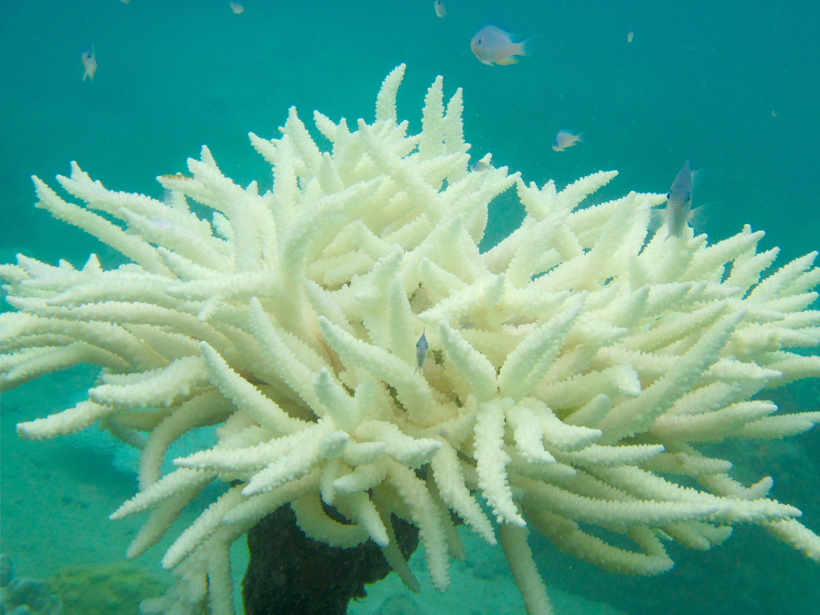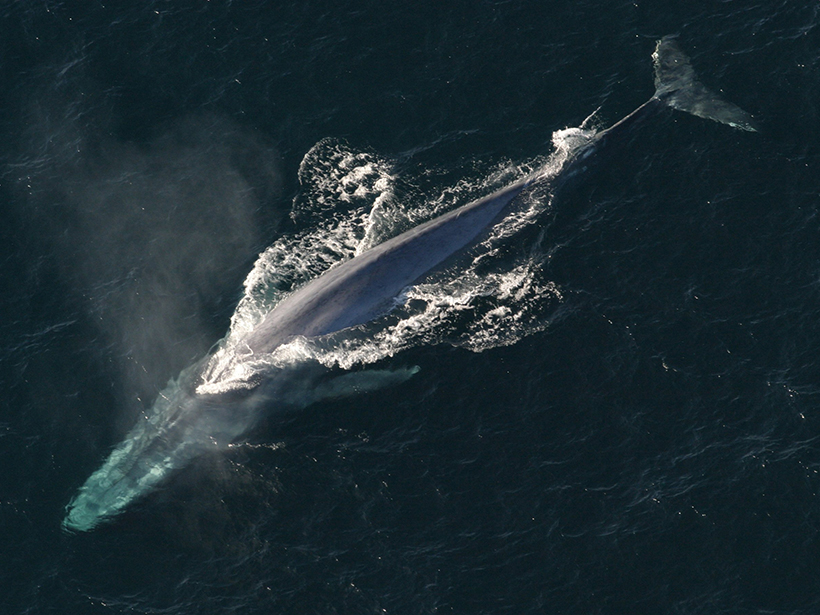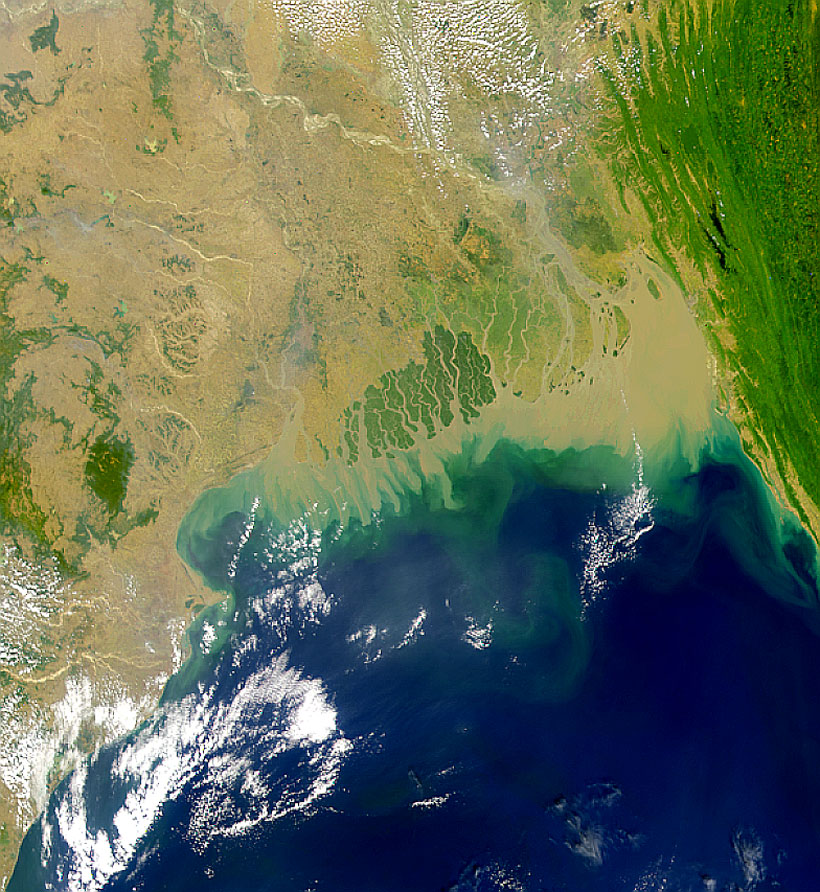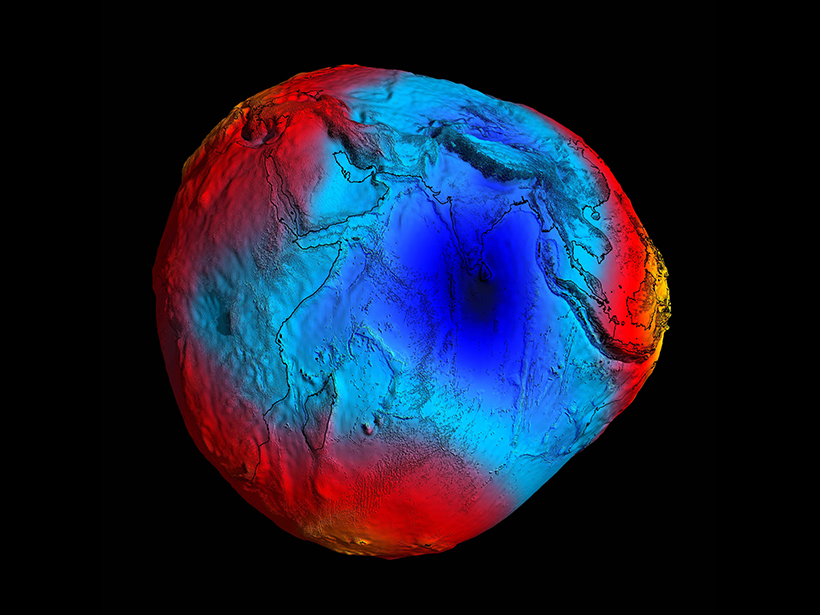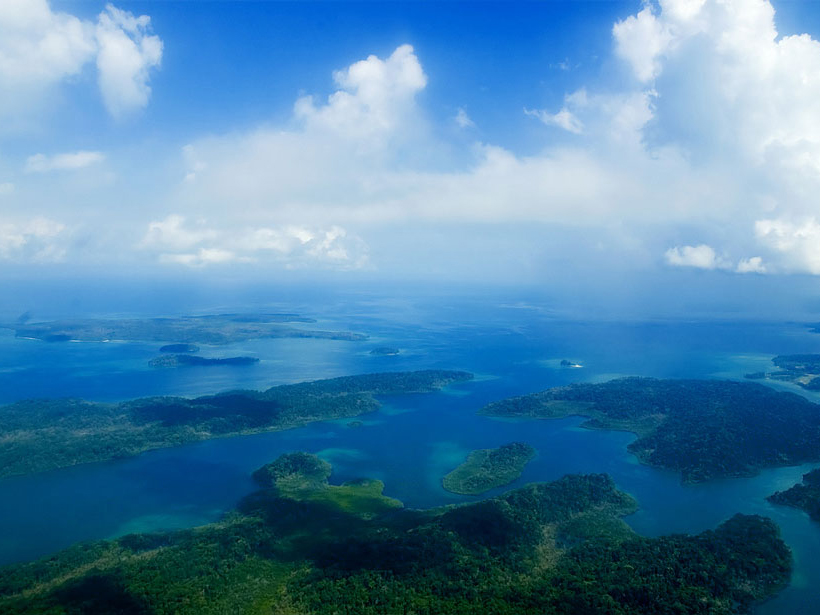New research indicates that longitude, as well as warming waters, may be a key predictor of coral bleaching events.
Indian Ocean
CAT Pictures of Internal Solitary Waves in Indonesian Strait
Huge and rapid subsurface temperature changes associated with propagating internal solitary waves were observed from a moored coastal acoustic tomography (CAT) system in Lombok Strait in Indonesia.
Meteotsunami Spotted for the First Time in the Persian Gulf
The Persian Gulf, a region with high-end resorts and oil-related infrastructure dotting its shorelines, was hit in 2017 by weather-induced waves that rolled roughly a kilometer inland.
Seasonal and Annual Changes in Pitch in Blue Whale Calls
Six years of acoustic recordings detect seasonal shifts in blue whale vocalizations that correlate with the presence of icebergs, a primary source of ambient ocean noise in the southern Indian Ocean.
Sea Level Rise May Reactivate Growth of Some Reef Islands
Reconstruction of reef island formation in the Maldives suggests the possibility that not all islands will shrink as climate change progresses.
Australia–New Zealand Plan for Future Scientific Ocean Drilling
Australian–New Zealand IODP Consortium Ocean Planet Workshop; Canberra, Australia, 14–16 April 2019
The Search for the Severed Head of the Himalayas
To unearth the very first sediments to erode from the Himalayas, a team of scientists drilled beneath the Bay of Bengal.
Seismologists Search for the Indian Ocean’s “Missing Mass”
An Indian scientific team set out to sea last year to find clues to the source of an unusually weak gravitational potential in the middle of the Indian Ocean.
Ice Drove Past Indo-Pacific Climate Variance
Researchers used both terrestrial and marine proxy data to reconstruct the dramatic and dynamic climatic changes.
Investigating the Northern Indian Ocean’s Puzzling Geodynamics
International Ocean Discovery Program (IODP) Proposal Nurturing Workshop on Indian Ocean; Goa, India, 17–18 September 2018

